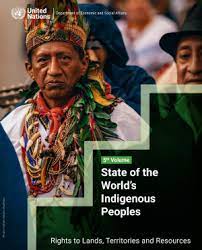Culture and Biodiversity Conservation: Case studies from Uttarakhand, Central Himalaya
Publication Year: 2012
Author(s): Negi CS
Abstract:
Cultural diversity is closely linked to biodiversity. The study of these interrelationships need to be studied mainly for the simple reason that culture is not only the ethical imperative for development, it is also a condition of its sustainability; for there exists a symbiotic relationship between habitats and cultures, between ecosystems and cultural identity, and that this relationship constitutes a determining factor in ensuring sustainable human development. The association of religion with eco-system management is interwoven in the symbolic network of the Himalayan traditional communities. Infact no one can think of ecology in the Himalaya without religion. The present study deals with the study of sacred natural sites (forests/groves, pastures, water bodies) along with the phenomenon of dedication of the forests to a deity, and the inherent taboos with regard to the resource exploitation and other traditional beliefs and customs being practiced in the Central Himalaya, and attempts to bring out the inherent environmental principles behind these practices.
Source of Publication: Indian Journal of Traditional Knowledge
Vol/Issue: 11(2),273-278pp.
Country: India
Publisher/Organisation: NISCAIR-CSIR
URL:
https://nopr.niscpr.res.in/bitstream/123456789/13856/1/IJTK%2011%282%29%20273-278.pdf
Theme: Traditional/ Indigenous Knowledge | Subtheme: Protection/ Regulations
Related Documents
Policies/Regulations
Meghalaya Biodiversity Strategy & Action Plan (MBSAP): 2017-2030
Published Year: 2019
Abstract:
The MBSAP attempts to involve multiple stakeholder, experts, organizations, entities and agenc... Read More
Reports

Abstract:
Indigenous peoples’ relationship to their lands, territories and resources is at the hea... Read More
Policies/Regulations
The Biological Diversity (Amendment) Bill, 2021
Published Year: 2021
Abstract:
The Lok Sabha introduced the Biological Diversity (Amendment) Bill, 2021 on December 16, 2021... Read More



